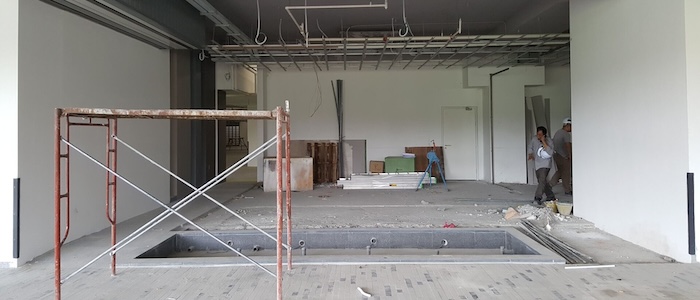Dashpivot article – CITB construction phase plan

CITB Construction Phase Plan
A construction phase plan (CPP) is an important document that spells out the health and safety issues that come up with a certain building project. The plan should include the rules and procedures that are in place to keep possible dangers to a minimum or get rid of them completely. A building phase plan, which is sometimes called a construction phase health and safety plan, can help the whole team on-site meet higher safety standards and project safety goals.
The Building (Design and Management) Regulations (CDM) say that all building projects, no matter how long or small, must have construction phase plans. Every project needs a building phase plan, no matter if it's for a home, a business, or an industrial space, and it doesn't matter if the project will last a few hours or a year. Before any work can commence, the construction phase plans must be completed. Without a legal system in place, labour cannot begin.
The Role of CITB in Construction Phase Planning
The Construction Industry Training Board (CITB) in the UK is a statutory entity that is essential to forming and assisting the construction sector. It was founded in 1964 and functions under the UK government's auspices. Its main goal is to guarantee that the construction workforce in England, Scotland, and Wales is suitably qualified and trained in order to support the expansion and sustainability of the sector. A critical need in the construction industry served as the impetus for the founding of CITB. The business was expanding quickly in the 1960s, and it became clear that there was a skilled labour shortage. The industry's advancement was seriously hampered by this shortfall. In order to monitor and handle the training and development requirements of the construction workers, the UK government created CITB in answer to this difficulty.
Anyone working in the construction sector has to understand the significance of CITB. Therefore, the following are some main explanations for why CITB holds such a prominent position in the industry:
Skill Development
One goal of the CITB is to upskill workers and improve their knowledge and skills satifactorily. This is done through training courses and offering a certification that holds qualification that a worker possesses the standards needed for the industry. They will work with organisations and companies and identify the gaps the workers need to work on. Personnel who undergo CITB training will gain a deeper understanding of project planning and hone their skills on it. The modules on the CITB sharpen their mastery on creating schedules, allocating resources, and foreseeing challenges on the construction phase. Over-all with their developed skills, construction phase plans are better made and executed.
Maintaining Safety and Standards
The construction industry always has risks in their activities. This is an understanding that all contractors would agree. But, with the CITB training, these hazards are better understood. The critical aspects of these hazards being part of the construction phase are discussed specifically. This will inculcate the need for providing the correct safety measures in the construction field, making the work area more healthy for workers to work in.
The CITB also highlights the safety regulatory standards needed to be implemented during the construction phase. These will enable workers to follow the rules in accordance with what is required in the standards, further enhancing their mastery in practicing them. With this kind of practice taking place, legal penalties, delays due to non-compliance, and costly back jobs would be less likely to happen.
Quality Assurance
The primary goal of CITB is to develop workers to be more competent and knowledgeable enough to execute construction works with quality. And as proof that they have fully accomplished the training and completely harnessed everything to know about quality work in construction, workers are provided with certificates as evidence to prove that they are able to do what is required based on the set standards. Employees equipped with the skill of quality assurance would improve construction phase plans, ensuring that the designs and specifications are always met. Also, with personnel who are able to assure quality, cost would be optimised by reducing delays, problems are detected early, therefore solutions are immediately provided, and resources are maximised. With this, construction phase plans are made to the best of quality.
Research And Development
The world is changing faster than ever before, especially in the field of technology. CITB recognises all these events and aims to keep up with the growth of technology. With that said, they are continuously adapting to what is on trend and providing research on how they can integrate these new technologies into construction. With research on new technology, construction phase plans are more detailed, which improves overall quality. With visualisation tools and more accurate scheduling, risks are easily detected and more accurate solutions can be provided. With this in the construction phase planning, the assurance of a a quality project is easily pictured out when new technology is blended on its fabrication.
Key Features of a CITB Construction Phase Plan
In this part of the article, we will be seeing the key features that a Construction Plan Phase (CPP) should contain based on the Construction Industry Training Board (CITB). This will generally provide you with an outline of how you should make your CCP.
Project Details
To have a clearer perspective on a project and to create objectives aligned and specific to project goals, a project description must be fully detailed. It should contain all the necessary details about the project, all personnel and relevant contractors involved, and an outline of the chain of command. Having a detailed project description will provide clarity and direction for the project. Everyone will have the same goal in mind and have a uniform understanding of the project goal and purpose. Also, to prevent misunderstandings and guide contractors, subcontractors, and everyone involved towards project completion, project details should clearly define the scope and limitations.
Work Specifications
This is the primary juice of a construction phase plan. This contains all primary instructions involved in the project. Here, roles are properly defined to have workers fully understand their work scopes, and the chain of command is established to streamline workflow. Time tables, monitoring programmes, budget allocation, and all management-related work are also outlined here. This will provide centralised planning and coordination and solidify accountability and documentation. With this, everyone is fully informed, keeps up with project progress and goals, and executes better sequencing of activities. Making a defined and solid work flow management in your construction phase plan can better lead everyone in securing milestones and goals on time while creating quality work.
Health and Safety
This part of the construction phase plan shows all the relevant and possible hazards during the construction. Hazard identification and creating a risk assessment on all the activities involved in construction are mostly defined here. This will help in procuring and implementing all the required safety measures needed throughout the construction period. This part should also show its commitment to the regulatory standards. The measures required by the regulatory body should be documented here for easier audits and to avoid non-compliance leading to legal fees. It should always be part of the responsibility and commitment of organisations to maintain and foster a safe and healthy work environment.
Environmental Factors
It should also be a commitment to organisations and companies in managing the factors in construction that affect our environment. Like in safety and health management, these factors should also be identified and provided with the proper measures to mitigate their effects on the environment. There are also regulatory requirements with regards to these environmental factors. Environmental regulatory compliance should be strictly implemented and documented in the construction phase plan to avoid non-compliance leading to legal fees. The earth is already experiencing adverse weather conditions due to climate change and the rise of ocean temperatures. It is our duty to help the earth recover and still provide a home for future generations.
Monitoring and Review
A vital aspect of building is keeping track of the project and observing its development. This data will enable individuals to know their current project position and what more has to be done. This sort of knowledge will also enable them to examine and pinpoint the causes of delays as well as their related problems. Should workers come across such problems in the future, this would help them make wise decisions. Monitoring the developed and real timeline throughout your building phase will help to more effectively plan your project. They will also form the foundation for review in next decisions.
These are what generally outline a CCP based on the CITB. To give you a better visualisation of what a CCP should look like, take a look at the example below. To better understand the contents of a CCP in detail, read more on What should a construction phase plan include?

Use and edit this construction phase plan doc
Integrating Tech in the CITB Construction Phase Plan
We have established how essential a construction phase plan should be to the completion of a project, and we have also outlined what a CCP should generally contain based on the Construction Industry Training Board. With this, we now have the basic idea of the forms and documents to create related to our CCP. However, if you really think about it, creating all the required forms and documents for the CCP can be overwhelming. There's a lot of forms you have to manually create, the repetitive tasks of printing over and over again, and during actual implementation, there's a lot of potential for errors. In simpler terms, its a very tedious and long process before everything is organised.
Fortunately, like what was discussed in this article, there is now technology that resolves this problem. The Dashpivot platform can provide you with a Construction Phase Plan app & software that gives you all the needed forms for your CCP and streamlines the process of these forms digitally. You can easily create and update your construction phase plans to improve your safety performance and compliance in less time. You dont have to worry about creating forms from scratch because with the Dashpivot App you can create your digital construction phase plan using the drag and drop form builder, or use and customise the free digital template. The hassle of going through multiple pages and looking for what you need is also eliminated in the Dashpivot app. You can easily view these details in the Daspivot's timeline view and register views.
You will be able to begin building much more quickly and easily with the help of the Dashpivot app and software, which will make the process of creating and upgrading CCPs, as well as enhancing safety performance and compliance, much simpler.

Near Miss Reporting
Keep site safer by making your near miss reporting procedure safe and streamlined.

Risk Assessment Method Statement (RAMS)
Customise the Risk Assessment Method Statement (RAMS) template to your project or team needs.

Risk Register
A general risk register template you can use for documenting any type of project risk.


